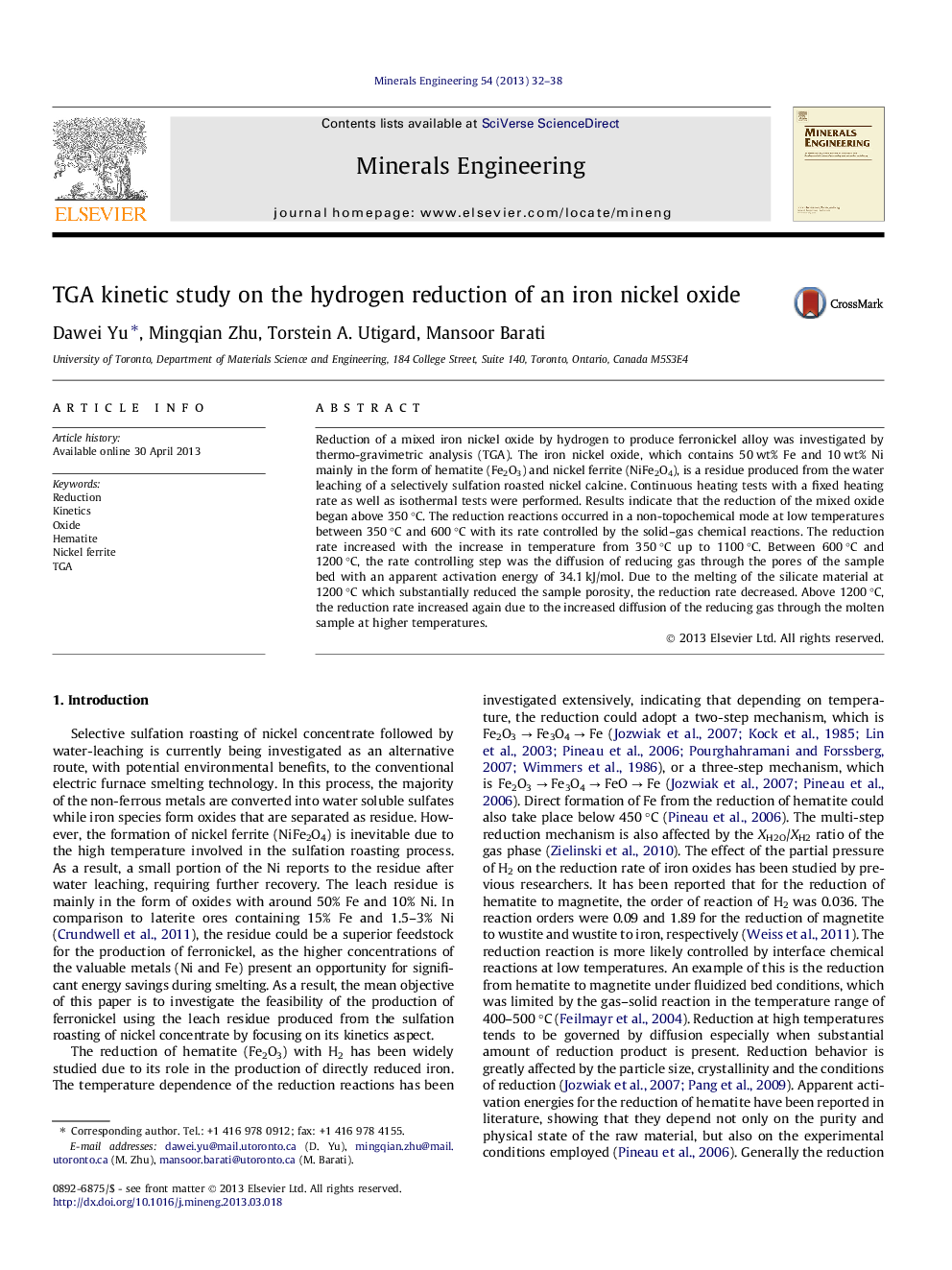| Article ID | Journal | Published Year | Pages | File Type |
|---|---|---|---|---|
| 233355 | Minerals Engineering | 2013 | 7 Pages |
•We examine the kinetics for the hydrogen reduction of an iron nickel oxide.•Chemical reactions control the reduction rate below 600 °C.•Gas diffusion through the sample control the reduction rate between 600 and 1200 °C.•Decrease in sample porosity reduces the reduction rate above 1200 °C.•Reduction rate increases with the increase of PH2 with the reaction order of 1.44.
Reduction of a mixed iron nickel oxide by hydrogen to produce ferronickel alloy was investigated by thermo-gravimetric analysis (TGA). The iron nickel oxide, which contains 50 wt% Fe and 10 wt% Ni mainly in the form of hematite (Fe2O3) and nickel ferrite (NiFe2O4), is a residue produced from the water leaching of a selectively sulfation roasted nickel calcine. Continuous heating tests with a fixed heating rate as well as isothermal tests were performed. Results indicate that the reduction of the mixed oxide began above 350 °C. The reduction reactions occurred in a non-topochemical mode at low temperatures between 350 °C and 600 °C with its rate controlled by the solid–gas chemical reactions. The reduction rate increased with the increase in temperature from 350 °C up to 1100 °C. Between 600 °C and 1200 °C, the rate controlling step was the diffusion of reducing gas through the pores of the sample bed with an apparent activation energy of 34.1 kJ/mol. Due to the melting of the silicate material at 1200 °C which substantially reduced the sample porosity, the reduction rate decreased. Above 1200 °C, the reduction rate increased again due to the increased diffusion of the reducing gas through the molten sample at higher temperatures.
